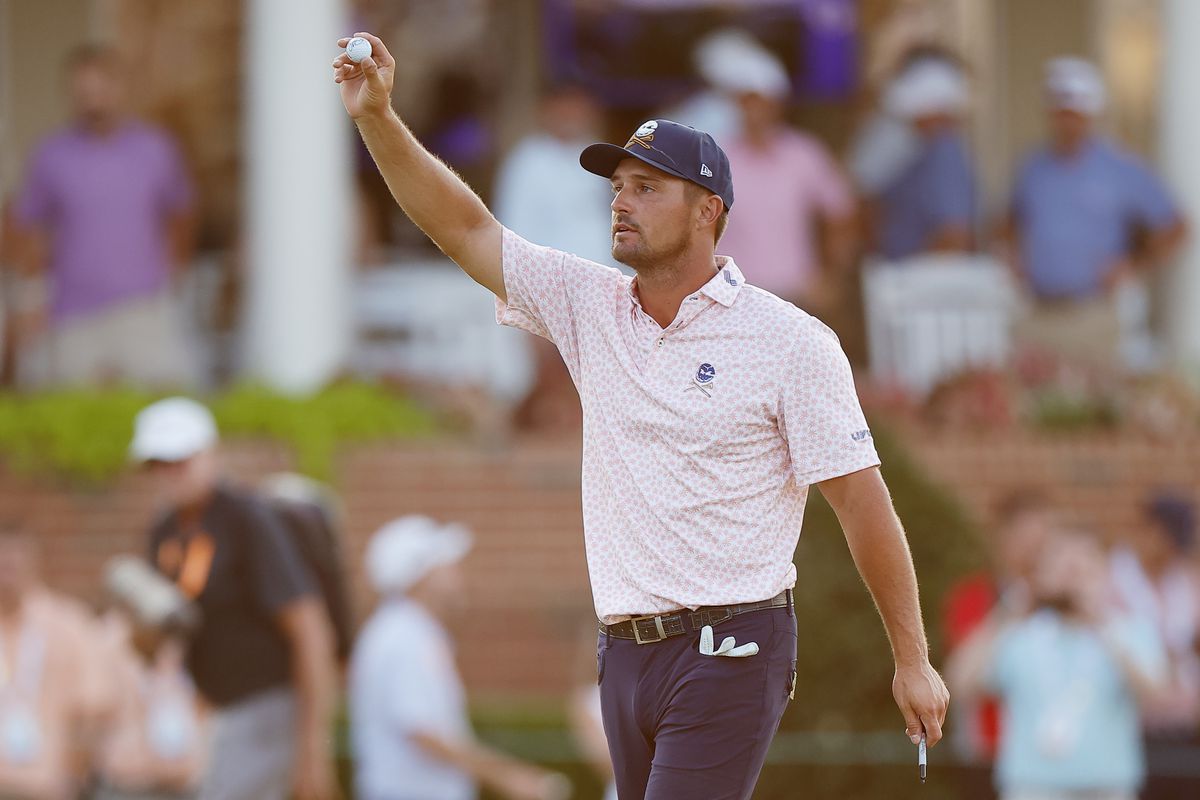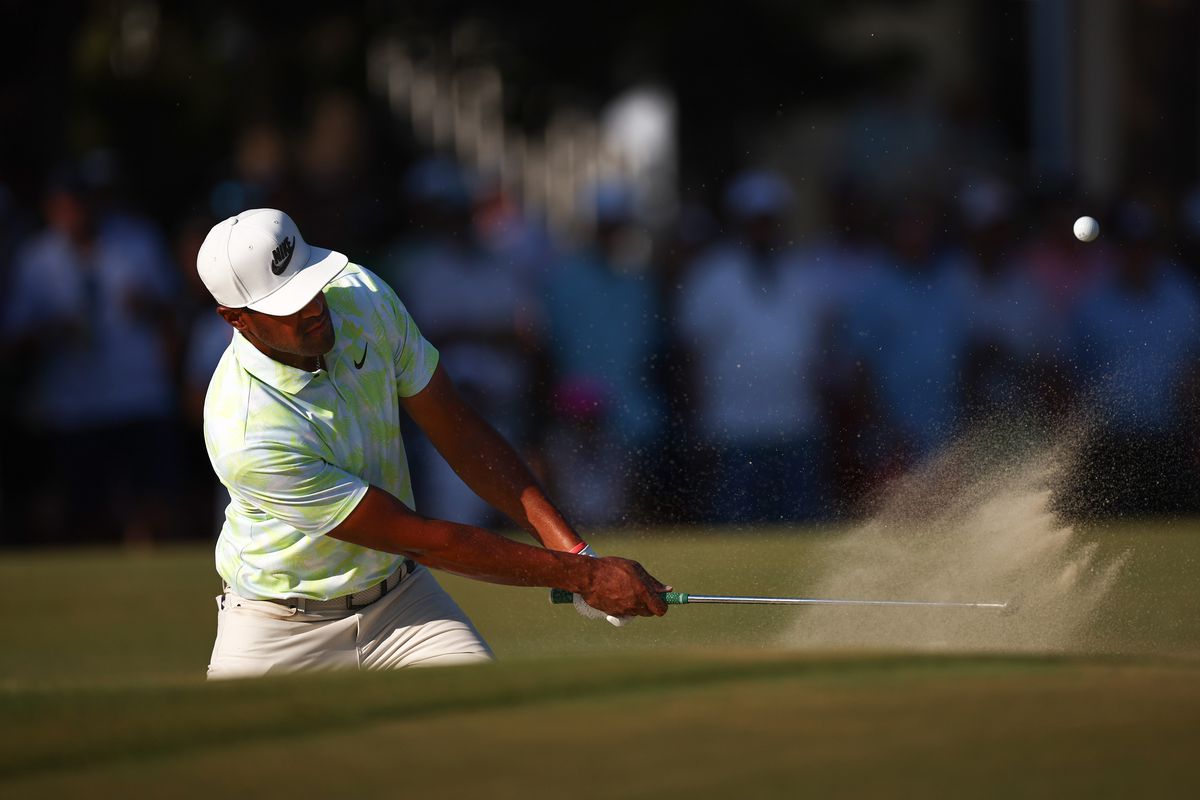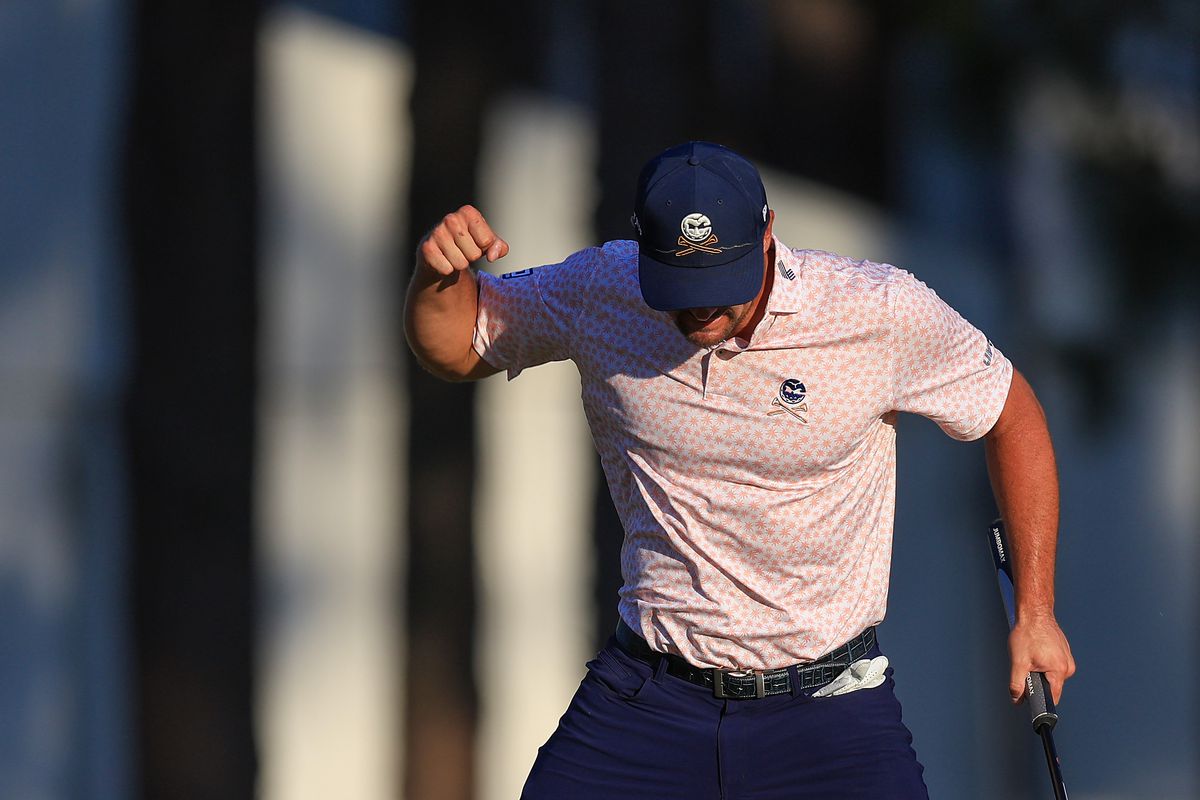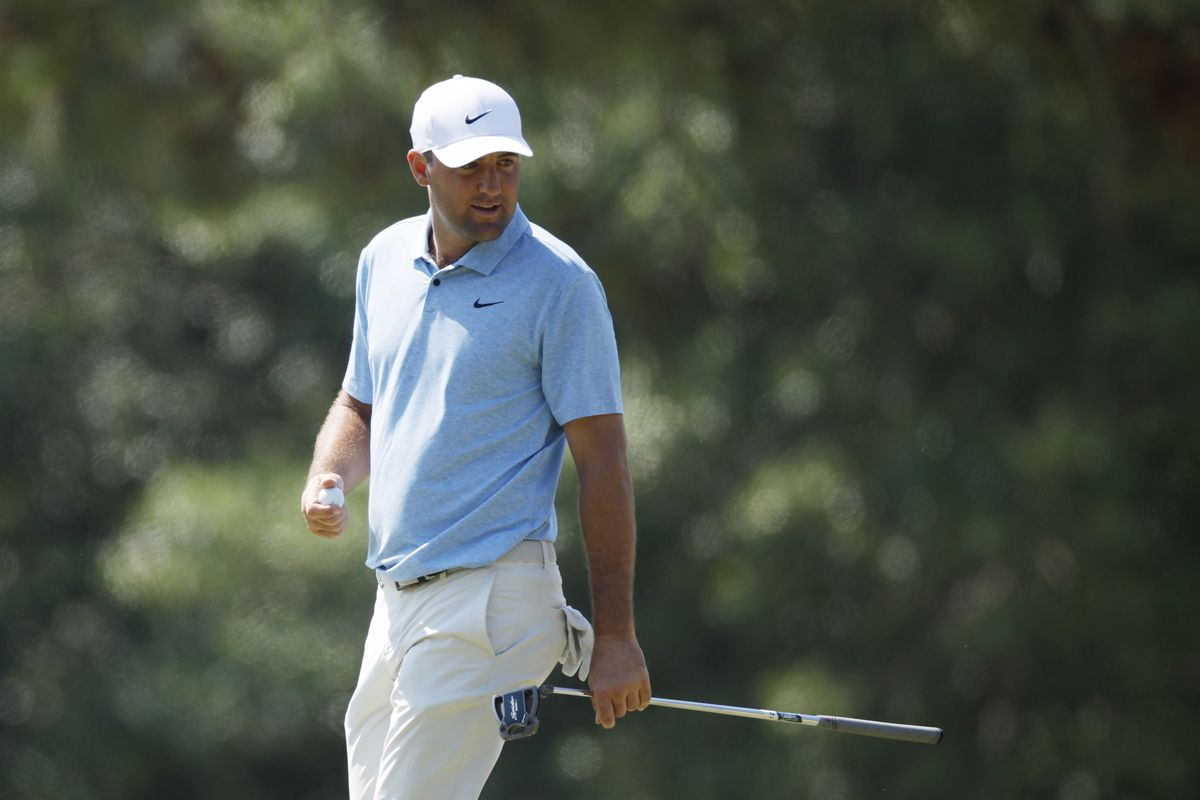After the Dallas Mavericks’ deflating loss in Game 3 to the Boston Celtics on Wednesday, the normal cliches and platitudes were shared by players and coaches alike. The theme was universal: the series isn’t over, take it one game at a time.
It was nothing earth-shattering, a semi-cliche sentiment and mentality shared by most professional athletes facing such a scenario. History said that Wednesday’s loss meant the likely end of the series for Dallas, but they still had a job they’re paid to do, and they’re still going to do it.
But even with all of the chatter, and knowing Boston might feel a little comfortable up 3-0, it’s hard to think anyone expected the Mavericks to completely dominate Game 4 of the NBA Finals in Dallas.
Their 122-84 demolition of Boston was such an extensive and brilliant performance that Dallas is actually leading in the aggregate for the series; they are now +6 through the four games, outscoring Boston 408-402. A team winning Game 4 after falling behind 3-0 in any playoff series isn’t unusual, but the Mavericks’ dominance in doing so certainly was, especially when you consider how historically great this Celtics team is.
So normally a win in this scenario doesn’t raise too many eyebrows or change thoughts about the series as a whole. Normally. But while the Celtics are still the overwhelming favorite to win the NBA title, a win of this magnitude does invite the possibility of “what if?” If the Mavericks could decimate the Celtics this badly in an elimination game, are the two teams as far apart from each other as most thought?
We’ll find out soon enough, but these questions have a sudden validity now that they didn’t feature before. So if we’re going to take Game 3 as a blueprint, here’s how the Mavericks can shock the world, beat the Celtics, win the NBA Finals, and make history by becoming the first NBA team ever to overcome a 3-0 series deficit.
Continue to trust their bigs defensively
The Mavericks’ biggest strength heading into the Finals was their rim defense, behind the stalwart duo of trade deadline acquisition Daniel Gafford and rookie standout Dereck Lively II. Through the first three games of the Finals, that advantage was hardly felt as the Celtics spread out and sliced up the Mavs’ defense and neutralized their size advantage.
In the first three games, this all looked like a system shock to both Gafford and Lively. Dallas had solid options for those two to roam off of in the first three rounds, while the Celtics give a defense no easy outs. It’s not just that Boston plays five-out, but the other four perimeter players in their starting lineup are all comfortable driving and passing. Lively in particular looked like he finally hit his rookie wall in the first two games, understandable for a 20-year-old rookie who had already impressed so much. That changed a little in Game 3, and then the script flipped completely in Game 4.
The duos’ performance in the win was easily their best of the series. After the two failed to contain drives well on switches early in the series, it was clear Dallas wanted its two bigs to stay as close to the rim as possible. In Game 3, that meant Lively and Gafford were sometimes stuck in the paint as the Celtics swung the ball to shooters in the corner. What made matters worse was Boston still shot well at the rim, despite the extra attention to guard the paint. Entering Game 4 the Celtics were shooting a staggering 81.7% in the restricted area, while also averaging 14.7 corner three attempts per game. The two best shots in basketball are layups and corner threes, and Boston was getting both of them, with Dallas’ centers often in no man’s land trying to cover ground they’d never had to cover before.
In Game 4 the two clearly felt more comfortable — Boston attempted a series low seven corner threes and only shot 58.8% in the restricted area. Credit the two bigs for being let off the leash a bit, as both Gafford and Lively ventured outside the paint again, this time with better results. The two put together a highlight reel of closeouts, quick feet, and strong contests on Friday night.
If Lively and Gafford can play in space defensively, it changes the game for the Mavericks defense. You could really feel the continued absence of Kristaps Porzingis, as Al Horford only had one 3-point attempt in 23 minutes, and Xavier Tillman off the bench only had two attempts total. The floor geometry is just significantly different with the slower trigger of Horford and the lack of threat Tillman presents. Lively and Gafford could be aggressive, knowing there’s not a seven-foot unicorn waiting behind them to make them pay from the perimeter. The closeouts are just a little bit easier with Porzingis on the bench.
It also helps when those bigs get support, like Luka Doncic showed repeatedly throughout Game 4.
Doncic played his best defensive game on Friday, rebounding from fouling out in Game 3. Dallas’ bigs are better suited when they can play aggressive and not have to clean up so many mistakes. If the mistakes keep coming, that means those two are reacting and compensating instead of dictating the terms. Dallas isn’t going to completely solve the math problem the Celtics present (Boston still shot 41 total threes Friday), but they can do a better job directing where those 3-pointers come from. The corner three is so valuable because it’s a shorter shot, but that swings both ways — it also means it’s less ground to cover on closeouts. Lively and Gafford are big, long dudes: they have the length and athleticism to close out to the corner and then recover to the rim. As long as their teammates continue to back them up and coach Jason Kidd trusts them, the Mavericks can give themselves a chance defensively.
Green, Exum pressuring the defense
The Celtics rarely double on defense, or blitz the pick and roll. They like to play drop with their bigs, and switch the other four spots. With as many talented individual and team defenders as they employ in their rotation, it makes a lot of sense. It makes even more sense against this Mavericks team, who play a lot of players that need Doncic and Kyrie Irving to spoon feed them buckets.
Boston made the correct bet that if Lively, Gafford, PJ Washington, and Derrick Jones Jr. don’t have wide-open space, their effectiveness on offense is limited. Those aren’t players that can bust one-on-one defense, or truly make a closeout pay: Lively and Gafford live on lobs, while Washington and Jones do their damage on corner threes and spot-up attempts. The Celtics have taken those away, as the Mavericks corner threes have plummeted. Doncic and Irving’s usage rates have skyrocketed in the Finals, and the Celtics are daring that duo to beat them with tough twos against shaded coverage. It’s not that Boston isn’t helping at all, it’s just that they’re not doubling aggressively to get the ball out of Doncic or Irving’s hands — they’re inviting the long twos, and shading help toward the paint without outright doubling.
That defense has left most of Dallas role players ineffective. It’s not just that they’re not making shots, but the volume of attempts for the Mavericks role players has decreased mightily in the Finals. Game 4 saw the right adjustment to this, with more minutes for backups Josh Green and Dante Exum. Exum and Green haven’t had great playoffs, but this matchup and style might suit them better — for better and worse, those two have the most live-dribble juice of any Mavericks players outside of Doncic and Irving. Exum and Green’s shared ability to both aggressively drive and pass gives the Mavericks a counter to the Celtics defense — if they’re daring the role players to beat one-on-one coverage, you need role players that can attack and pass. Not playmakers, necessarily, but just players that can make the simple straight-line drive and the right read.
Green and Exum’s stat lines don’t pop off the box score (they combined for 13 points and one assist) but it was undeniable that their presence loosened the Celtics’ defense a little, just because they had the ability to dribble past their man and make the right play, unlike Washington and Jones.
On this Exum layup in the second quarter, look how tight Exum’s defender is playing up on him.
With Doncic face-guarded, Exum has a defender right on him despite holding a live dribble on the logo. Boston doesn’t respect the Mavericks role players to drive past that type of defense, so Exum’s ability to get by and score is the counter. The same goes for the nice Green assist in the third quarter for a Lively jam — Brown picks up Green tight, and Green burns the overplay and gets into the paint.
These are plays that the rest of the Mavericks non-stars can’t do. While it might have taken longer than Mavericks fans wanted, kudos to Kidd and the coaching staff for making the right adjustment.
Luka Doncic’s paint efficiency
After Game 3, Irving noted that with how the Celtics are giving himself and Doncic one-on-one chances in the paint and near the rim, it’s on them to be efficient enough to force the Celtics into another coverage. On Friday, that duo certainly was, especially Doncic.
Doncic missed every 3-pointer he took in Game 4, but was an impressive 11-16 in the paint, including 5-6 in the restricted area. Irving was 9-12 on twos, most in the paint. Dallas as a team scored 60 points in the paint, and you could see that paint control tilt the Celtics defense a little bit, as the Mavericks finally got some corner threes (4-7 from the corners, compared to 2-5 in Game 3). There was even a trap in the third quarter as the Celtics were underwater as the game spiraled out of control, but that’s what the Mavericks have to do to force Boston try something else. Dallas still didn’t have a high assist game on Friday, with only 21 total, and Doncic finished with six assists. There is still room for experimentation and working with Irving’s off-ball gravity, but none of this matters if Doncic isn’t converting in the paint, which he did in Game 4.
It also helps to score in the paint when you get stops, and it’s no coincidence that the Mavericks’ best defensive game of the series also resulted in Dallas scoring well in transition. The Mavericks only had 11 fastbreak points, after 12 in Game 3, but that follows up single-digit fastbreak performances in Games 1 and 2. It’s also no surprise that Lively and Gafford combined for 18 points, their highest of the series, as those two got out and ran the floor and got the space they needed before Boston’s halfcourt defense settled in.
None of this means a Game 7 or even a Game 6 is a guarantee — Boston is that good. But the Mavericks showed a formula in Game 4, a formula that really started to develop during Game 3 on Wednesday. The Mavericks put that blueprint together for a full game on Friday and executed, and while their chance to make history is still a ways off… it is just enough to allow oneself to start thinking about this series in a new light.

:no_upscale()/cdn.vox-cdn.com/uploads/chorus_asset/file/25493650/2157756812.jpg)

:no_upscale()/cdn.vox-cdn.com/uploads/chorus_asset/file/25493123/2157751057.jpg)

